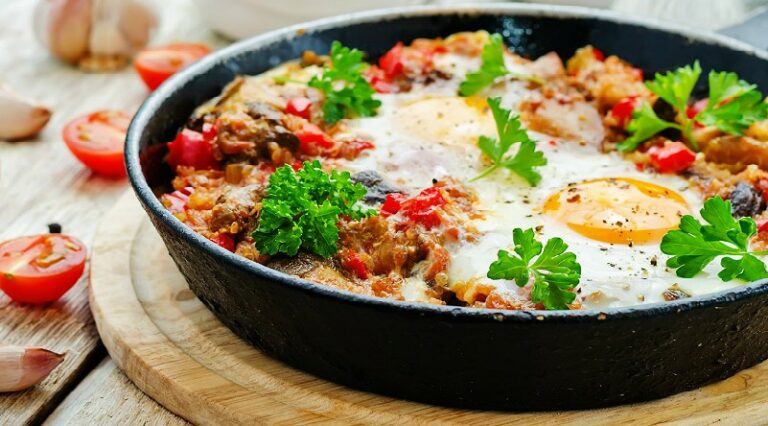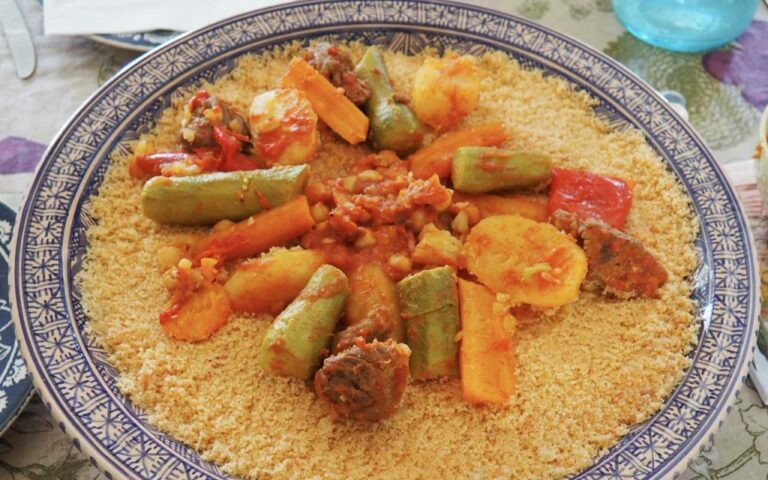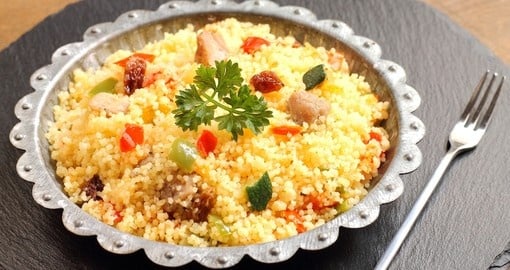Introduction to Tunisian street food
Tunisian cuisine is known for its spices, herbs, and diverse flavors. Tunisian street food is no exception, and it offers a variety of dishes that showcase the country’s culinary heritage. Tunisian street food is not only delicious but also affordable, making it a popular option for locals and tourists alike.
Traditional Tunisian dishes
Some of the traditional Tunisian dishes that are popular as street food include brik, a crispy pastry filled with egg and tuna, harissa, a spicy paste made of chili peppers, garlic, and olive oil, and tajine, a slow-cooked stew made with meat, vegetables, and spices. Other traditional dishes include couscous, merguez sausage, and chorba, a spicy soup made with lamb or chicken.
Popular Tunisian street food items
One of the most popular Tunisian street food items is the fricassé. This sandwich contains a deep-fried bread that is filled with tuna, egg, harissa, olives, and capers. Another popular item is the shakshuka, a dish made with eggs poached in a tomato and pepper sauce. Tunisia is also known for its seafood, and popular street food items include grilled octopus, fried sardines, and stuffed squid.
Savory snacks and sandwiches
In addition to fricassé, Tunisian street food offers many other savory snacks and sandwiches. Pastries such as mlaoui, a flaky bread filled with cheese or meat, and ftayer, a triangular pastry filled with tuna or potato, are popular choices. Tunisian street vendors also offer a variety of sandwiches, including kebab, merguez, and shawarma.
Sweet treats and desserts
Tunisian street food also includes a variety of sweet treats and desserts. One popular item is bouza, a type of ice cream made with mastic, a resin that gives it a unique texture and flavor. Another dessert is bambalouni, a fried doughnut that is drizzled with honey or syrup. Tunisian street vendors also offer a variety of pastries, including baklava and makroudh, a date-filled pastry.
Where to find Tunisian street food
Tunisian street food can be found throughout the country, and it is especially prevalent in the medinas, or old town areas, of major cities such as Tunis, Sousse, and Sfax. In addition to street vendors, many Tunisian cafes and restaurants also serve street food items. Some popular areas for street food include Avenue Habib Bourguiba in Tunis and the fish market in Sfax. It is important to note that while street food is generally safe to eat, it is always a good idea to practice basic food safety precautions, such as choosing vendors that have a high turnover of food and avoiding raw or undercooked items.







![Can you recommend a good Tunisian restaurant in [specific location]?](https://foodnerdy.com/blog/wp-content/uploads/2023/05/10-2-768x480.webp)


